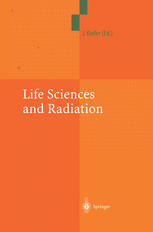

Most ebook files are in PDF format, so you can easily read them using various software such as Foxit Reader or directly on the Google Chrome browser.
Some ebook files are released by publishers in other formats such as .awz, .mobi, .epub, .fb2, etc. You may need to install specific software to read these formats on mobile/PC, such as Calibre.
Please read the tutorial at this link: https://ebookbell.com/faq
We offer FREE conversion to the popular formats you request; however, this may take some time. Therefore, right after payment, please email us, and we will try to provide the service as quickly as possible.
For some exceptional file formats or broken links (if any), please refrain from opening any disputes. Instead, email us first, and we will try to assist within a maximum of 6 hours.
EbookBell Team

4.1
100 reviewsScope and ideas of the workshop The workshop which took place at the University of Giessen from Oct. 3 to Oct. 7, 2002 and whose proceedings are collected in this volume started from the idea to convene a number of scientists with the aim to outline their ”visions” for the future of radiation research on the basis of their expertise. As radiation research is a very wide field restrictions were unavoidable. It was decided to concentrate this time mainly on molecular and cellular biology because it was felt that here action is par-ticularly needed. This did not exclude contributions from neighbouring fields as may be seen from the table of contents. It was clearly not planned to have a c- prehensive account of the present scientif fic achievements but the results presented should only serve as a starting point for the discussion of future lines of research, with the emphasis on the ”outreach” to other parts of life sciences. If you are interested in the future ask the young – we attempted, therefore, to invite mainly younger colleagues (with a few exceptions) who had, however, already left their marks in the field. They were asked to describe what they felt is important in radiation research and may have significant influences on other branches of life sciences. They were given the task to demonstrate what is lost for science ”if we do no longer exist”.